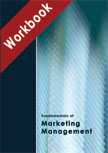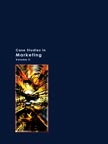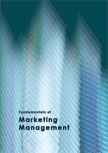Crisis Management at Bausch & Lomb (B): The 'ReNu with Moistureloc'
Debacle




|
|
ICMR HOME | Case Studies Collection
Case Details:
Case Code : MKTG171
Case Length : 19 Pages
Period : 2005-2007
Pub Date : 2007
Teaching Note :Not Available
Organization : Bausch & Lomb
Industry : Eye Care
Countries : Europe, USA, Asia
To download Crisis Management at Bausch & Lomb (B): The 'ReNu with
Moistureloc' Debacle case study
(Case Code: MKTG171) click on the button below, and select the case from the list of available cases:

Price:
For delivery in electronic format: Rs. 400;
For delivery through courier (within India): Rs. 400 + Rs. 25 for Shipping & Handling Charges
» Marketing Case Studies
» Marketing Management Short Case Studies
» View Detailed Pricing Info
» How To Order This Case
» Business Case Studies
» Case Studies by Area
» Case Studies by Industry
» Case Studies by Company
Please note:
This case study was compiled from published sources, and is intended to be used as a basis for class discussion. It is not intended to illustrate either effective or ineffective handling of a management situation. Nor is it a primary information source.
|
|
<< Previous
Collateral Damage! Contd...
|
Four days later, the company asked retailers to stop selling MoistureLoc, but
not before the retailers themselves had pulled the brand off the shelves, which
resulted in bad publicity for B&L. B&L stopped short of recalling the product as
its investigations as well as investigations of independent researchers failed
to establish any cause-and-effect link between Moistureloc and the infection.
The company contended that the infections were a result of improper use of
contact lenses and the failure of consumers to adopt good lens care practices.
It launched a consumer education program to promote awareness about the disease
and to urge consumers to adopt good lens care practices.
|
|
The CDC and FDA conducted investigations at the company's facility at
Greenville, South Carolina, USA, to find out whether there was a link
between MoistureLoc and the infection. Though the investigations failed to
reveal any connection between the brand and the infection, the criticism of
B&L from crisis management experts and consumers became more strident and
B&L finally decided to recall MoistureLoc globally on May 15, 2006. B&L
proposed that MoistureLoc, under certain unusual conditions, could actually
be shielding the fungus rather than destroying it.
|
|
It said that though there was no great risk of
infection, it was recalling the brand as it gave top priority to the
safety of its customers. It also started concentrating on aggressively
promoting its widely used ReNu MultiPlus multipurpose solution (MultiPlus)
instead. Both CDC and FDA endorsed this view. However, analysts felt
that the harm had already been done. By failing to act proactively in
the face of the crisis, B&L had damaged its brand value, they said.
In August 2006, CDC in a research report concluded that MoistureLoc was
responsible for the eye infections, though it could not ascertain how
the brand was responsible. |
This led to more criticism of B&L as many felt that the
company had not paid heed to earlier reports of potential health hazards of its
multipurpose solutions including MoistureLoc. It was also criticized for not
owning up to the defect in its products and for trying to shift the cause of the
infections to the lens care practices of consumers. But B&L contended that the
CDC report had only vindicated its decision to recall the product and reiterated
that MultiPlus was an effective alternative...
Excerpts
>>
|
|



